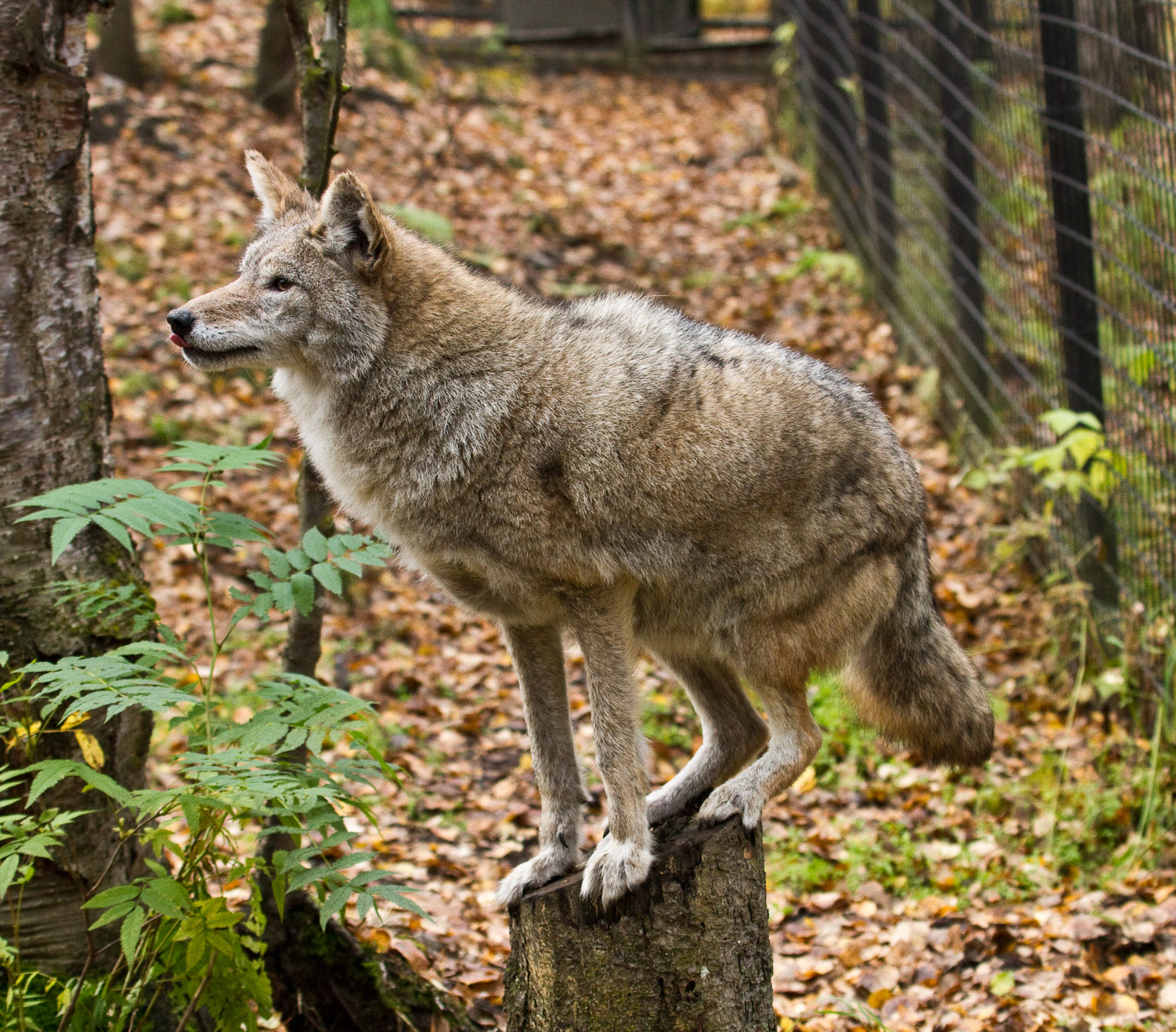Coyote and Red Fox
Meet two of Alaska's canids, the coyote and red fox. They are cousins to gray wolves. The last member of the zoo’s gray wolf sibling pack passed away due to old age in 2022. We currently only have coyotes and red foxes for canid species. Back to animal directory.
coyote
Canis latrans
LIFE SPAN: 19 years under human managed care.
RANGE: Widespread throughout most of North America. In Alaska, they are found mostly on the Kenai Peninsula, in the Matanuska-Susitna Valley and the Copper River Valley.
SIZE: Coyotes weigh 20-40 pounds, 25 pounds average.
PHYSICAL FEATURES: Coyotes vary in color, size and thickness of fur. They are larger than fox, but smaller than wolves. They possess behaviors of both wolves and fox.
FOOD: Coyotes are very opportunistic feeders. They scavenge for prey as well as hunt live prey. Coyotes will tackle larger prey (deer) by teaming up with other coyotes and running relays to tire prey, then ambush it in a wolf-like hunting style. Coyotes will also hunt in a solitary fashion by jumping in a high arch and pinning prey under their forepaws, a very fox-like way to hunt. They adapt their hunting style to their location and available prey base. This makes them a very adaptable species with a widespread range.
BEHAVIOR: Coyotes are excellent runners, in fact the best of the dog family. A coyote will run at speeds of up to 30 mph, sprinting to reach 40 mph. They are incredible jumpers and swimmers also. Their adaptable nature allows them to thrive in remote areas as well as in urban areas, although they are not found in cities or towns as frequently in Alaska as they are in the Lower 48 states. They co-exist with humans and even manage to extend their range despite encroachment on their habitat.
CONSERVATION: Coyotes are common throughout their range. They are often subjected to poisoning, trapping and aerial shooting. In 1942, they were called “obnoxious animals” by the Game Commission and a bounty was put on them. This bounty was finally lifted in 1969. Coyotes are a valuable species in an ecosystem who help to keep rodent populations in check, along with other prey species.
PLANT NOTES: Coyotes prey heavily on small mammals and birds, both of which rely on plants for food and cover. As the diversity of plant communities changes (ex: due to fire or logging), the variety of small mammals and birds changes. This causes shifts in the composition of coyote diets in the wild. They usually weather these changes well given their adaptable nature. Coyotes will supplement their diet with berries or plants when live prey are unavailable.
red fox
Vulpes vulpes
LIFE SPAN: 15 years in captivity.
RANGE: Red fox are found throughout most of Alaska south of the Brooks Range, except for some of the Aleutian islands and islands of Southeast Alaska.
SIZE: Adults weigh between 6-15 pounds.
PHYSICAL FEATURES: Red fox are identified by their white-tipped tails and black legs, regardless of their coat color. Many variations of coat color exist, from red (most common) to silver or black. There is also a cross coloration, a mix in color between red and darker fur across the shoulders. The red fox does not change coat color seasonally.
FOOD: The red fox is highly omnivorous. They prefer to eat voles but will also eat small mammals, birds, eggs, insects, vegetation and carrion. The fox caches (stores) excess food when hunting is good and will remember cache locations and return later if extra food resources are needed.
BEHAVIOR: The red fox is a member of the family Canidae, the dog family. They are different from other members of this family in that they do not outrun prey as a preferred method. Wolves rely on endurance to chase and tire prey. Although fox can sprint at 30 mph for short distances, they rely on stealth and pouncing to catch prey. Fox will circle potential victims and jump 3 feet in the air to pin their prey down with their paws.
CONSERVATION: Red fox populations are stable in Alaska.
PLANT NOTES: Fox prefer to den in areas with vegetation cover, particularly in riparian (stream edge) areas.


